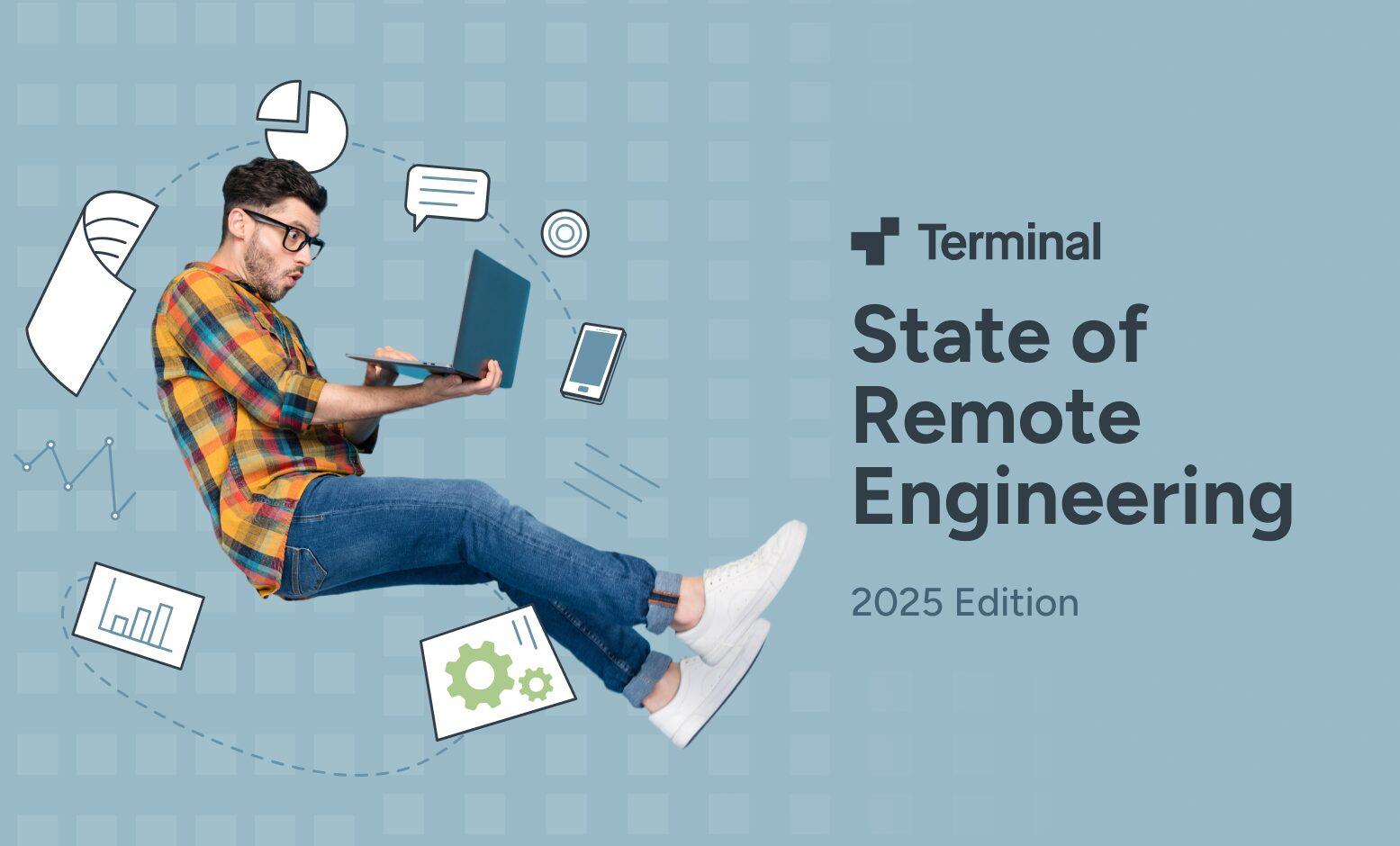
Demand | Blog Post
7 Top Tech Trends for 2025: AI, Green Tech, & Biometrics
Laura Berlinsky-Schine
Share this post
It’s hard to believe, but 2025 is right around the corner. As we approach the new year, we’re seeing transformative innovations that are rapidly changing the way we work and live. What are the top tech trends for 2025? Let’s take a peek.
Growth of Artificial Intelligence
ChatGPT was introduced a mere two years ago. Now, generative AI is anticipated to be embedded in 80% of conversational AI models in 2025.
AI (not confined to genAI) is expected to be the most important technology in 2025. We’ll see more sophisticated models that automate complex processes or repetitive tasks, enhance customer experiences through personalization, improve decision-making processes, and aid a variety of industries, including healthcare, finance, and education.
Responsible AI
With the growth of AI comes the need to make ethical choices about AI adoption. The realities and implications of artificial intelligence make responsible AI paramount.
For example, the EU calls the AI Act the “first-ever legal framework on AI.” The Act addresses the powerful technology’s risks toward the goal of ensuring that AI systems are safe, ethical, and trustworthy.
Many parts of the US are also taking strides to govern AI usage. In 2024, 31 states, Puerto Rico, and the Virgin Islands enacted legislation or adopted resolutions related to AI. Colorado, for example, requires developers and high-risk AI system deployers to “use reasonable care” to avoid algorithm-related discrimination and disclosures to consumers.
We’re likely to see more regulations in 2025, including protections against discrimination and the spread of discrimination, as well as greater data transparency. Human-centered AI (HCAI), which indicates that AI demands human oversight and input, will also be essential.
AI Agents
2025 also marks the year we could see agentic AI expand. AI agents—systems that use sensors to process information to act autonomously or near-autonomously—can make decisions and refine strategies independently without continuous human involvement. Essentially, it behaves like an agent to accomplish various tasks and solve problems. Think autonomous vehicles, virtual assistants, customer service chatbots, and robotic process automation (RPA).
- Simple reflex agents: These agents operate according to their surroundings, functioning on sets of predefined rules or reflexes. One example is a thermostat that senses the temperature of a room and turns the heat on or off according to preset conditions.
- Model-based reflex agents: Similar to simple reflex agents, these agents assess probable outcomes through more advanced decision-making capabilities and incorporate an internal model of the world. Self-driving cars, for instance, use various sensors to rely on internal models of roads, maps, and object detection to navigate their surroundings safely.
- Goal-based agents: Also known as rule-based agents, goal-based agents operate with a specific objective in mind and plan their approaches to achieve these goals. Consider a navigation system that suggests the quickest route you should take to achieve your end goal—reaching your destination.
- Utility-based agents: This type of agent takes goal-based agents a step further by evaluating the risks associated with different outcomes. Then, it makes decisions based on which path will maximize the utility of the outcome. An example is a recommendation system that suggests products to users based on how much it predicts the user will like them.
- Learning agents: Learning agents learn from past experiences, feedback, and data and use that knowledge to enhance their performance over time. Virtual assistants are one type of learning agent—they learn about your patterns and preferences to provide a better user experience.
One in 10 organizations are already deploying AI agents. That means it will prove essential to upskill employees across industries to use AI intelligently, ethically, and responsibly.
Applied AI
Applied AI refers to practical use cases for AI to solve problems. It reaches numerous industries: healthcare, e-commerce, finance, manufacturing, transportation and logistics, energy, and more.
By deploying existing AI systems and tools, businesses and individuals improve decision-making and deliver real-world outcomes. It’s essentially the opposite of theoretical AI. Consider medical imaging analysis and personalized treatment plans. Google’s Health AI, for example, encompasses systems aimed at improving accessibility in healthcare and providing personalized solutions. Among many other features, it includes AI models that facilitate easier interpretation of critical information from ultrasound images.
Ultimately, whatever the use case, applied AI helps businesses find innovative solutions to wide-ranging problems.
Green Tech
Technology and the environment have long seemed to be at odds. It’s imperative to find ways to reduce environmental impact and account for our natural resources. This is the only way to address challenges regarding the environment and society.
Enter green tech, also known as climate tech or cleantech. Guided by the environmental, social, and governance (ESG) framework, green tech often leverages renewable resources, focuses on energy efficiency, and aims to minimize your carbon footprint.
With CO2 emissions from the U.S. projected to reach 4,807 million metric tons by 2050—if necessary action isn’t taken in time—a focus on renewable energy and eco-friendly technology is critical. Technology could even reverse the environmental damage caused by humans. In fact, 90% of executive leaders believe digital technology is critical for improving sustainability efforts, a 2022 Gartner survey found.
Some organizations are built with the mission of using technology to better the planet. Take venture capital firm Lowercarbon Capital, which exclusively backs companies dedicated to lowering carbon emissions. The VC firm is one of many playing a key role in supporting businesses focused on promoting clean energy through funding and expertise.
In 2022, global climate tech venture capital funding saw dramatic growth, reaching $70 billion. Battery technology, renewable technology, and storage solutions accounted for two-thirds of VC investment that year.
There are several other examples of technology supporting the Earth:
- AI to run diagnostics and see where waste is occurring
- IoT to optimize route planning
- Cloud computing solutions to shift on-premise data centers to the cloud
- Data analytics to measure carbon footprints
- Programs like Redwood Material’s lithium-ion batteries recycling initiative
When used in isolation, these solutions are powerful. Combining them allows businesses to be more environment-conscious overall and do their part for the planet.
Environmental Impact of AI
When it comes to technology’s environmental effects, there’s no understating the damage.
Training and running AI systems demand an enormous amount of computing power and energy. In fact, training some large AI models can produce roughly 626,000 pounds of carbon dioxide, according to a study by researchers at the University of Massachusetts. This is equivalent to 300 round-trip flights between New York and San Francisco. What’s more, a Goldman Sachs report finds that by 2030, there will be a 160% increase in demand for power from AI applications.
There are, however, several ways to combat AI’s consequences. For one, there must be greater funding to support the research and development of AI algorithms and energy-efficient hardware. This will help AI systems be equally or more efficient with less energy. Additionally, organizations should promote ethical AI design. This requires collaboration among stakeholders, businesses, academics, policymakers, and the wider public.
It’s also imperative to recognize bigger isn’t always better. IBM research shows that some models that have been trained on specific, relevant data can perform just as well as those 3-5 times larger—but more quickly and with lower energy consumption.
Of course, as AI systems gain prevalence and sophistication, there are sure to be more challenges. It’s the responsibility of everyone—not just the developers and companies building the models—to find solutions to protect the planet.
Global Cybersecurity
Threat Landscape
With threats mounting, businesses must be on higher alert than ever before. Yet only 2% of companies worldwide have implemented cyber resilience across their organization, according to PwC’s 2025 Global Digital Trust Insights survey. The same survey found that the top four cyber threats named—cloud-related threats, hack-and-leak operations, third-party breaches, and attacks on connected products—are also the ones security executives are least prepared to face.
The emergence of sophisticated technologies heightens the risk. For instance, AI-created malware aids cybercriminals. There is an increased attack surface thanks to remote work with the expansion of the IoT and public cloud. Generative AI allows for the infiltration of deepfakes. And these are just some of the threats we’re facing.
Strategies for Cybersecurity
Fortunately, there are many ways to mount a resistance against cybercrime. In fact, many of the same tools that present threats can also help protect your organization.
For example, AI can be used for good, offering sophisticated threat detection. One use case is predictive analytics, which can help organizations anticipate attacks.
Organizations must also take holistic approaches to improve cyber hygiene, such as by enforcing stringent cybersecurity policies and adopting zero-trust security models to reduce instances of vulnerabilities. They should also hold regular trainings and audits. Meanwhile, working with partners and specialists helps create a secure infrastructure and develop a culture of cyber resilience.
Quantum Computing
The United Nations has named 2025 the International Year of Quantum Science and Technology (IYQ).
Quantum computing involves solving complex problems at lightning-fast speeds. It’s built on quantum bits (qubits), which store information in a way that’s distinct from traditional bits. It applies principles of quantum mechanics and extends the limits of data processing far beyond what traditional computers are capable of. It can also scale exponentially.
Many see quantum computing as something that could solve impossible problems. It can be applied to:
- Faster drug and medical treatment development
- Optimizing manufacturing processes
- Cryptography
- Predicting climate change patterns
- Financial modeling and risk assessment
- Solar capture
- Cybersecurity
- Renewable energy
According to a McKinsey & Co., survey, 72% of tech executives, investors, and academics in quantum computing expect to see a fully fault-tolerant quantum computer by 2035. No matter what, 2025 could see dramatic strides forward in the field.
Blockchain Beyond Cryptocurrency
The World Economic Forum expects that 10% of global GDP may be tokenized and stored on the blockchain by 2027. However, despite the fact that cryptocurrency launched blockchain’s rise to stardom, its implications and use cases already extend far beyond the monetary realm.
Offering security, transparency, immutability, and decentralization, blockchain applies across industries and niches.
For example, blockchain enhances transparency in supply chains, allowing manufacturers, businesses, and consumers to track products’ journeys. In healthcare, which frequently grapples with sensitive data, it enables better data sharing, patient record management, insurance claim processing, and more.
In 2025, we may well see blockchain being used to secure personal data for enhanced data management. Increasingly, the technology could be applied to digital voting, providing identity protection and tamper-free ballot-casting. It also means greater transparency in entertainment and media through, for instance, secure licensing and royalties distribution.
Biometric Technology
You’ve almost certainly had experience with biometrics already. Perhaps you use your face to unlock your phone or your palm to verify your identity at the doctor’s office.
Biometrics refers to technology that leverages the unique characteristics of humans to identify them. By leveraging physical or behavioral characteristics that are specific to the individual and cannot be replicated, businesses can ramp up security, verification, and access control.
As hackers and cybercriminals get more sophisticated, security measures need to as well. Today, even methods like two-factor authentication are not foolproof. Consider this: financial services faced a 23% increase in cyberattack attempts in 2022. And biometrics is playing an important role in security.
Common examples of biometric technology include:
- Retina scanning
- Voice recognition
- Facial identification
- Fingerprint or palm scanning
- Behavioral biometrics that track interactions, such as mouse movements
Biometrics can be applied to unlocking devices, gaining entry to buildings, authenticating users for contactless payment, and more. The market is rapidly growing, with facial recognition gaining the most prominence.
However, there are challenges associated with biometrics. Some see it as invasive. Businesses have access to very sensitive data, after all. And behavioral biometrics can be used to micromanage employees, which lowers morale.
In the coming year, we could see developments in the biometric space aimed at addressing these and other challenges. There’s already the idea of reusable identity, where information about identities is stored on the user’s device and not kept by businesses. Users can access accounts and services with a single sign-on and store the information across different platforms. Additionally, leveraging AI with unbiased data sets helps ensure inclusivity. These and other measures can help facilitate easier usage and accessibility.
Metaverse Expansion
A recent innovation, the metaverse is showing a promising trajectory. User penetration is projected to increase to nearly 40% by 2030.
What is the metaverse? A somewhat elusive concept, it blends innovative technologies such as virtual reality (VR), augmented reality (AR), IoT, and 5G networking to deliver lifelike digital experiences. Through the metaverse, you can perform business and everyday activities. It creates a sense of immersion and agency. For example, you can heighten social interaction through avatars, which allow friends, coworkers, and even strangers to connect through diverse and innovative platforms.
The maturation of the metaverse will lead to a more immersive, transformative, and interconnected virtual universe. Tech giants like Meta (aptly named for the metaverse), Apple, and Microsoft are already investing in virtual worlds and mixed reality. Many startups are embracing the metaverse, too.
We have decentralized platforms, virtual goods marketplaces, and more. The metaverse can create jobs like virtual community managers or digital world designers. It also promises new opportunities for training and learning in fields like healthcare and engineering, such as by simulating complex scenarios in medical training, where students can practice procedures in a safe, risk-free environment.
“The metaverse will no doubt see organizations creating persistent virtual reality workplace environments, in which employees can interact in real time as embodied avatars,” said Sam Gilbert of the University of Cambridge. “Virtual versions of office spaces can be designed to encourage chance encounters and corridor chats: recreating the elusive ‘watercooler moments’ we’ve lost in the pandemic.”
In the coming years, it’s essential to make the metaverse secure and inclusive and address its technical limitations. Internet capabilities may not support the metaverse in many areas. It could be cost-prohibitive and exacerbate the digital divide.
Potential solutions include developing lightweight and cloud-based platforms that enable broader access without demanding high-end hardware. User interfaces must be developed with accessibility in mind, such as with voice commands and inclusive user experience features. Additionally, businesses could work with governments and NGOs to help subsidize metaverse solutions in developing countries.
Conclusion
What’s next on the horizon? Technology is ever-evolving. As we head into 2025, these are just a handful of the tech trends that are poised to change our world and give us unprecedented capabilities.


